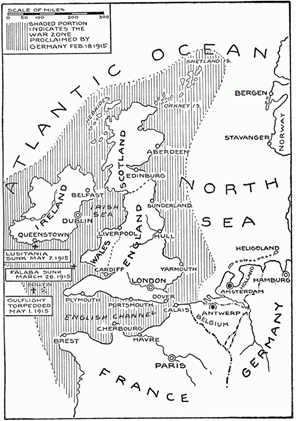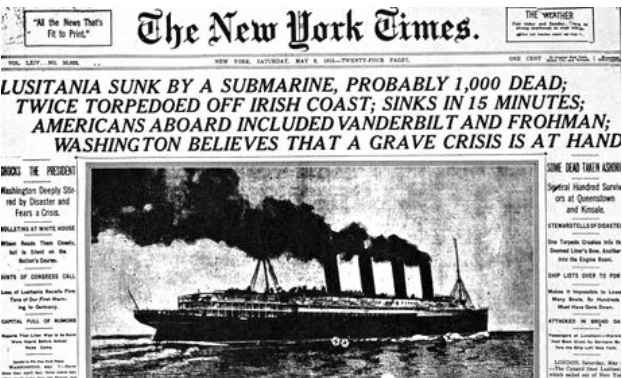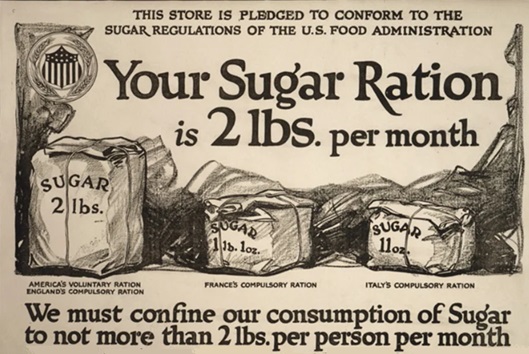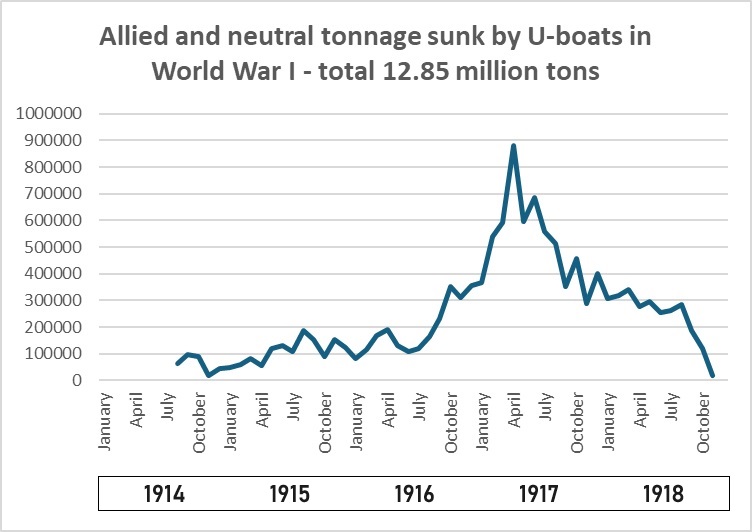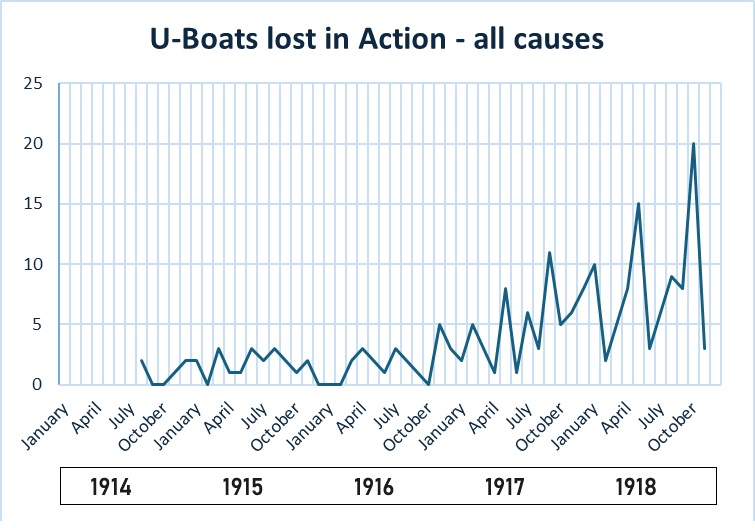|
|
|
|
The real crux lies in whether we blockade the enemy to his knees, or whether he does the same to us. Admiral of the Fleet David Beatty, 1917
Although there were naval actions all over the world during the war, there was only one significant sea-battle during the First World War – the Battle of Jutland in May 1916; more than 250 ships on both sides were involved. But some historians believe that the war was won and lost at sea, because neither Britain nor Germany could grow enough food to feed their people. The side that ruled the sea would win the war.
|
Going DeeperThe following links will help you widen your knowledge: Good account from
BBC Bitesize
YouTube Really clear, simple account from whawkvideo
|
The U-boat campaign against BritainThe Germans used a new invention – the U-boat (‘undersea boat’) – to sink ships bringing food and supplies to Britain.
|
Did You KnowThe first submarine flotilla in history took place in August 1914 when 10 U-boats set off from Heligoland. One broke down and had to return to base; another was rammed and sank; another sank of its own accord.. Just one torpedo was fired; it missed.
The "War Zone" announced by Germany on 4 February 1915.
|
|
The suspension of unrestricted submarine warfare The danger with unrestricted submarine warfare was that neutral ships were sunk, and neutral citizens killed.
|
May 1915, the Lusitania is sunk. Unknown to the passengers, the Lusitania was secretly carrying bullets and shells to Britain, which was why the ship blew up and sank so quickly. The sinking was a disaster for the Germans. The British government put out propaganda saying that the Germans were cruel killers of civilians. More importantly, 128 Americans were among the dead.
|
Anti-submarine measuresThe British tried different ways to stop the U-boats.
However, these measures proved ineffective, and by the end of 1916, the British had only sunk 15 U-boats. Yet by the end of 1916 German U-boats were sinking 1 in 4 merchant ships sailing to Britain. At one point, in 1917, Britain only had only two month’s supply of flour.
|
Rationing was introduced in Britain after December 1917, and ration books for butter, margarine, lard, meat, and sugar issued in July 1918. Was Britain really ‘in danger of losing the war’? Studies have shown that average energy intake decreased very little during the war.
|
|
The resumption of unrestricted submarine warfare In 1917, after a furious debate, the German Admiralty again took the risk of unrestricted submarine warfare. The key was a study which predicted that, if the U-boats could sink 600,000 tons of shipping a month, Britain would be forced to sue for peace within six months. On 31 January 1917, therefore – after Admiral Holtzendorff promised: “not one American will land on the Continent" – the Kaiser signed the order. And Holtzendorff was correct: US President Woodrow Wilson broke off diplomatic relations in February 1917, but he did not declare war. Many Americans were isolationist and Wilson had won the 1916 election with the slogan “He Kept Us Out of War” – it took the Zimmermann telegram to make America declare war on Germany on 6 April 1917.
|
Source AShipping losses from U-boat action, 1914-18.
|
Anti-submarine measures (continued)The uptick in shipping losses forced the British to develop further ways of protecting shipping.
|
Shipping losses from U-boat action, 1914-18. This graph is compiled from this webpage; if you look at the list, you will see which were the most effective ways of countering the U-boats. You will also see that U-boat technology was still in its infancy.
|
The Battle of Jutland, May 1916While the German U-boats were trying to sink British merchant shipping and starve Britain to death, the British navy was blockading German ports to try to starve the Germans to death.
|
Consider:1. Make a list of the key dates in the battle with the U-boats. a. Click on the graph of shipping lost (Source A) to bring up a larger version; can you link the shape of the graph to the developments in the battle with the U-boats? b. Now repeat, comparing the graph of U-boats lost (Source B) to the key developments in the U-boat war - which developments seem to have had little effect, and which were more successful? 2. Make a table of U-boat 'successes' and 'failures', and use it to write an essay: "How successful was the German U-boat campaign?" 3. What points would you make if you were asked to argue that the War at Sea was the Allies' 'war-winning-weapon'? What points would you make if you were asked to argue against that view?
|
When is a defeat not a defeat?The Germans claimed victory, but they never left port again (and, when ordered to do so in November 1918, the sailors mutinied). So, although the Germans gave the British navy a bloody nose, the blockade continued. The German people got more and more hungry. The German Board of Public Health claimed that three-quarters of a million Germans died from hunger and disease associated with the Blockade, and scurvy, tuberculosis and dysentery were widespread. In 1918, Germans were living on K-Brot, potatoes and berries; there were Hunger Riots in Germany in autumn 1915, summer 1916, and September 1918; and – fearing a Communist revolution – the German government was forced to end the war. In this way, Jellicoe’s ‘defeat’ at Jutland can be classified as a ‘war-winning weapon’!
|
|
|
| |
